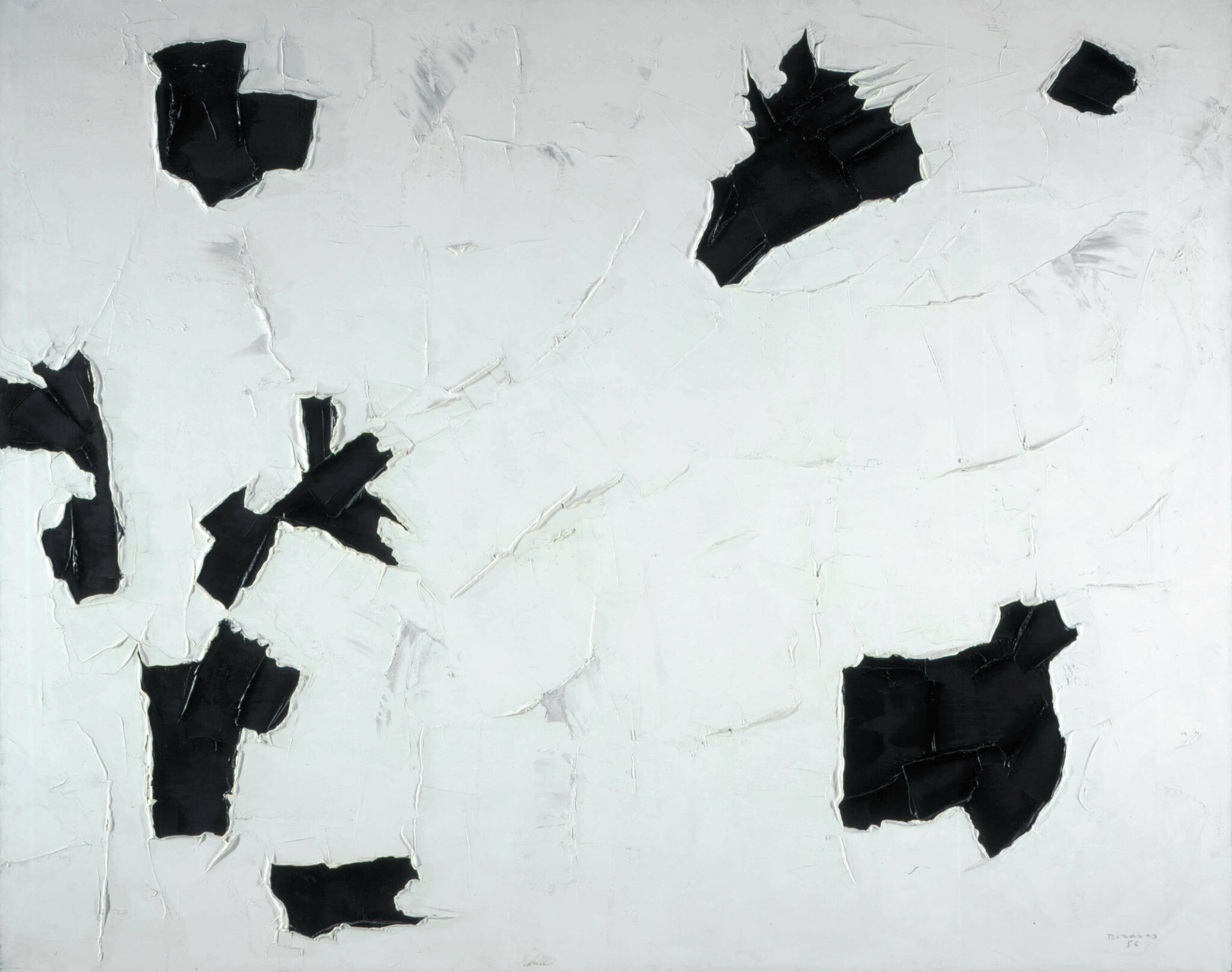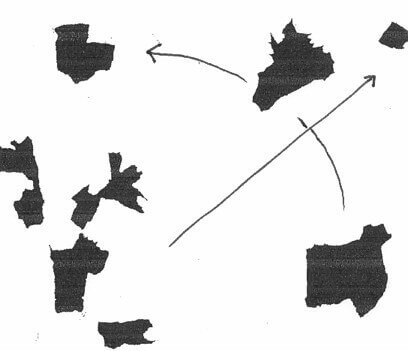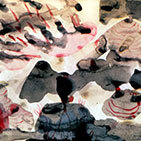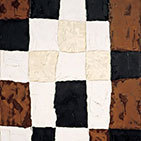3+4+1 1956

Paul-Émile Borduas, 3+4+1, 1956
Oil on canvas, 199.8 x 250 cm
National Gallery of Canada, Ottawa
Borduas sometimes included numbers in the titles of his paintings. At first he numbered his works simply to create a personal inventory (131, 132, and so on). Later, a numbered title corresponds to the date a canvas was painted (8.47, for example, is August 1947) or to its number in a sequence of paintings (19.47, the nineteenth canvas painted in 1947). Here, 3+4+1, and other similar titles, suggests the order in which the black spots should be read. We are directed to first read the three large ones that form an arc across the entire pictorial space, then the four at the lower left corner, and finally the small black spot that occupies the opposite corner (at the top right of the canvas).

The diagram (right) more clearly illustrates the path a viewer’s eyes might take. Borduas wanted the viewer to take full possession of the canvas rather than focus on a detail or texture in the blacks and whites. At the same time, by introducing this essential aspect of active participation by the viewer, he creates, in an abstract painting, the impression of movement. In addition, when colour is reduced to contrasts between black and white, the plastic quality of the painting increases.

 About the Author
About the Author
 More Online Art Books
More Online Art Books
 Acknowledgements
Acknowledgements